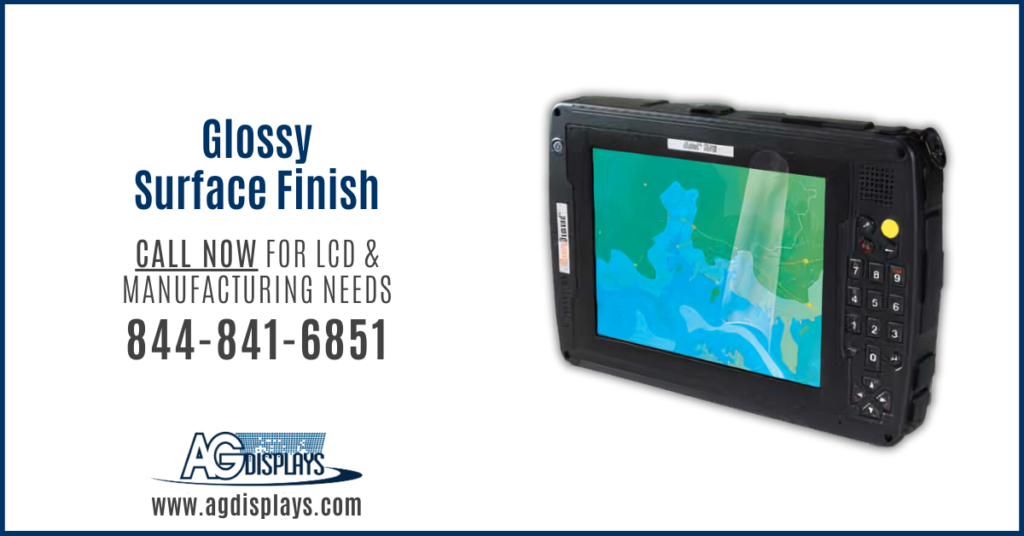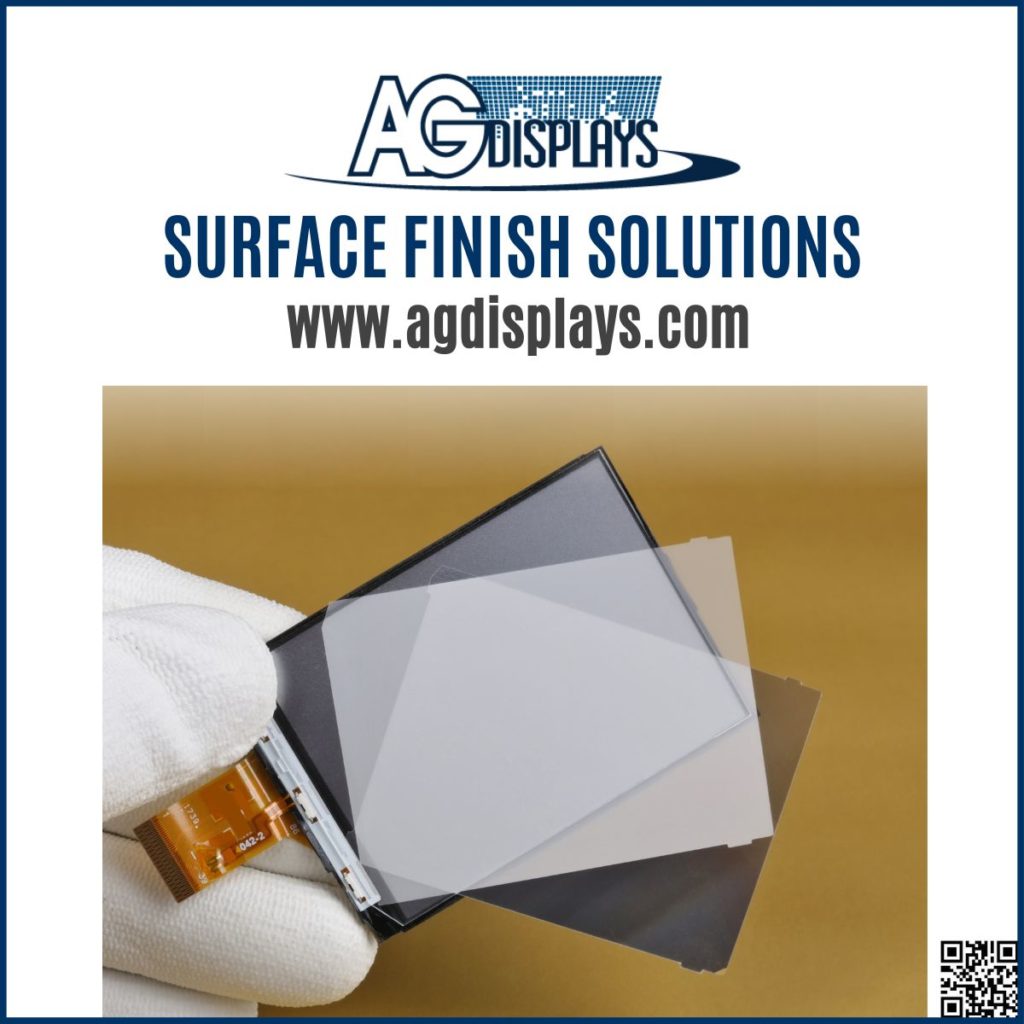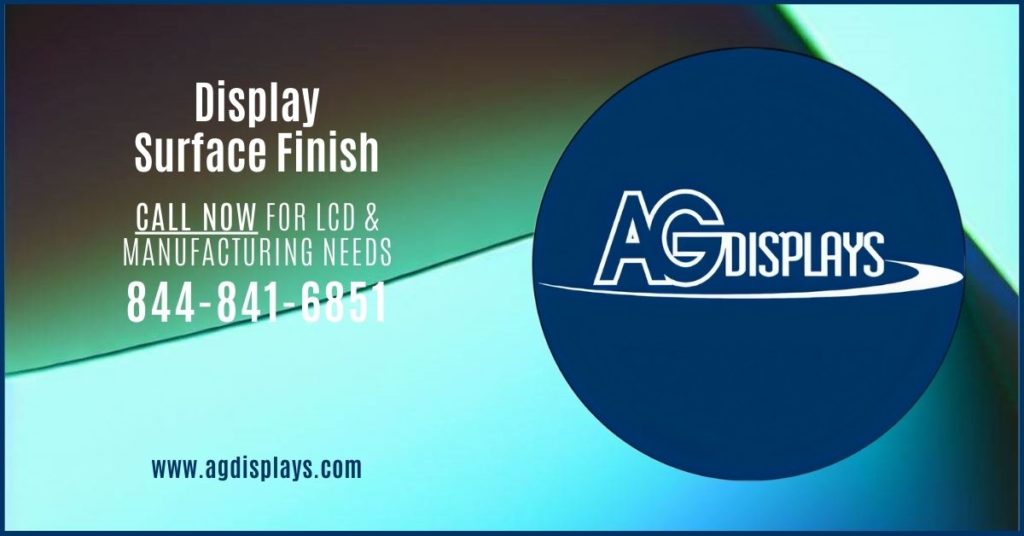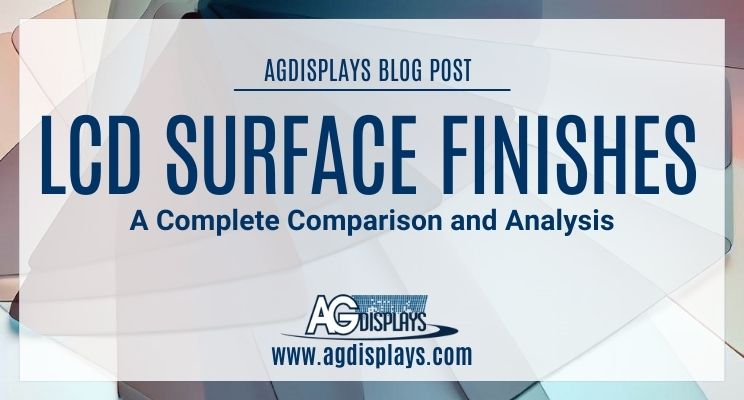LCD displays have become an integral part of our daily lives, from smartphones and laptops to industrial HMIs and rugged Military hardware. When it comes to LCD displays, the surface finish plays a vital role in enhancing visual quality, reducing glare, and improving overall user experience. In this analysis, we will provide an in-depth breakdown and comparison of various surface finishes available for LCD displays, including anti-glare, anti-reflective, and more. By understanding the technical nuances of these surface finishes, you can make an informed decision when selecting an LCD display that meets your specific requirements.
Glossy Finish:
The glossy finish is the most common surface finish found on LCD displays. It features a smooth and highly reflective surface that produces vibrant and vivid colors, making the content visually appealing. The glossy finish is achieved by applying a layer of glass or plastic with a low surface roughness. The low roughness minimizes scattering and diffraction of light, resulting in a high level of reflectivity. This reflectivity enhances color saturation and contrast, providing a visually striking experience, especially when displaying high-definition content.
However, the downside of this finish is its susceptibility to glare and reflections. In well-lit environments or areas with direct light sources, the glossy surface can result in distracting reflections and reduced visibility. This can be particularly problematic for outdoor use or in brightly lit rooms. Additionally, the smooth surface of glossy finishes tends to make fingerprints and smudges more visible, requiring frequent cleaning to maintain optimal display quality.

Matte Finish:
The matte finish, also known as an anti-glare or non-glare finish, has gained popularity due to its ability to significantly reduce glare. It features a microscopically rough surface that diffuses light, minimizing reflections and making the display more readable and comfortable to use in bright conditions. Matte finishes employ various techniques to achieve this effect.
One common approach is the application of an anti-glare coating, which consists of particles that scatter light, reducing the amount of light that reflects back to the viewer. The anti-glare coating is typically composed of microscopic particles embedded in a transparent material. These particles scatter light in multiple directions, thereby reducing the intensity of reflections and glare.
Another method involves incorporating a diffuser layer into the display structure. The diffuser layer consists of a film with a textured surface or microscopic structures that scatter light. When light encounters the rough surface or structures, it is diffused and dispersed, minimizing the impact of glare and reflections. This scattering effect improves visibility and reduces eye strain, making matte finishes suitable for a wide range of lighting conditions. By scattering and diffusing light, matte finishes improve visibility and reduce the strain on the viewer’s eyes. The reduction in glare also enhances the readability of the display by minimizing the interference caused by external light sources. Additionally, matte finishes are more effective in reducing the visibility of fingerprints and smudges, making them ideal for touch-enabled displays and portable devices.

Anti-Glare (AG) Coating:
Anti-glare coatings are a popular choice for LCD displays, particularly in laptops, monitors, and TVs. These coatings are typically applied to the surface of the display and work by scattering the incoming light, thereby diffusing reflections. AG coatings are composed of a thin layer of materials with a refractive index that is different from that of the display panel, causing light to scatter at the surface instead of reflecting back to the viewer.
The scattering effect is achieved by introducing microstructures or particles that redirect light in different directions. These structures or particles are designed to interact with light waves in a way that minimizes the intensity of reflected light. As a result, AG coatings effectively reduce glare and reflections, enhancing display visibility in various lighting conditions.
While AG coatings effectively reduce glare, they can introduce a slightly grainy appearance to the display. This graininess may impact the overall sharpness and clarity, particularly when viewing fine details or small text. However, advancements in coating technologies have led to the development of AG coatings with improved optical properties, minimizing the grainy effect while maintaining effective glare reduction.

Anti-Reflective (AR) Coating:
Anti-reflective coatings are designed to minimize both external and internal reflections, resulting in improved contrast, color accuracy, and overall visual experience. These coatings are typically composed of multiple layers of materials with varying refractive indexes. By minimizing the difference in refractive indexes between the layers, AR coatings reduce reflections that can interfere with the displayed image.
AR coatings work by utilizing the principle of interference. When light waves encounter a boundary between two materials with different refractive indices, a portion of the light is reflected back. By introducing layers with specific refractive indices, AR coatings can minimize the intensity of these reflected waves. The design and composition of AR coatings are optimized to achieve maximum light transmission by minimizing reflection losses.
AR coatings are commonly found in high-end displays and professional-grade monitors, offering enhanced clarity and detail. These coatings are particularly effective in reducing reflections caused by ambient light sources, such as overhead lights or windows. By reducing the interference from external reflections, AR coatings enhance the visibility of the display, ensuring a crisp and immersive viewing experience.
It is worth noting that AR coatings can slightly increase the cost of the display due to the additional manufacturing processes involved. However, the improved visual performance and reduced eye strain make AR-coated displays highly desirable for applications where image quality and viewer comfort are paramount.

Privacy Filters:
Privacy filters are a specialized type of surface finish that provides an additional layer of security by restricting the viewing angle. These filters are designed to prevent people from viewing the screen content from the sides, ensuring confidentiality in sensitive environments. Privacy filters typically employ a combination of optical polarization and diffusion techniques to achieve their intended effect.
Privacy filters consist of microscopic optical elements that allow light to pass through only when viewed from a specific angle. These elements are aligned in such a way that light waves with a particular polarization state can pass through, while others are scattered or absorbed. As a result, when the display is viewed from the front, the content is clearly visible. However, when viewed from the sides, the light is scattered or absorbed, making the display content difficult to view.
While privacy filters enhance privacy, they may slightly impact the display’s brightness and viewing angles for the intended user. The filter material itself can introduce a slight haze or texture, which may affect the clarity and sharpness of the displayed content. It is important to consider this trade-off when evaluating the suitability of privacy filters for specific applications, particularly in terms of balancing security requirements with display quality.

Conclusion:
When it comes to LCD displays, the choice of surface finish significantly impacts visual quality and user experience. Glossy finishes offer vibrant colors but are prone to glare and reflections. Matte finishes, including anti-glare and anti-reflective coatings, effectively reduce reflections and enhance readability in various lighting conditions. Anti-glare coatings scatter light to minimize reflections, while diffuser layers disperse light to reduce glare. Anti-reflective coatings utilize interference principles to minimize both external and internal reflections, resulting in enhanced clarity and contrast. Privacy filters restrict viewing angles to provide an additional layer of security but may slightly affect display brightness and viewing angles. By understanding the technical intricacies and trade-offs of different surface finishes, electrical engineers can select an LCD display that optimally aligns with their specific needs and usage requirements, ensuring an optimal viewing experience.
Learn More about our LCD Film Enhancement Services: AGDisplays Film Enhancement eBook

